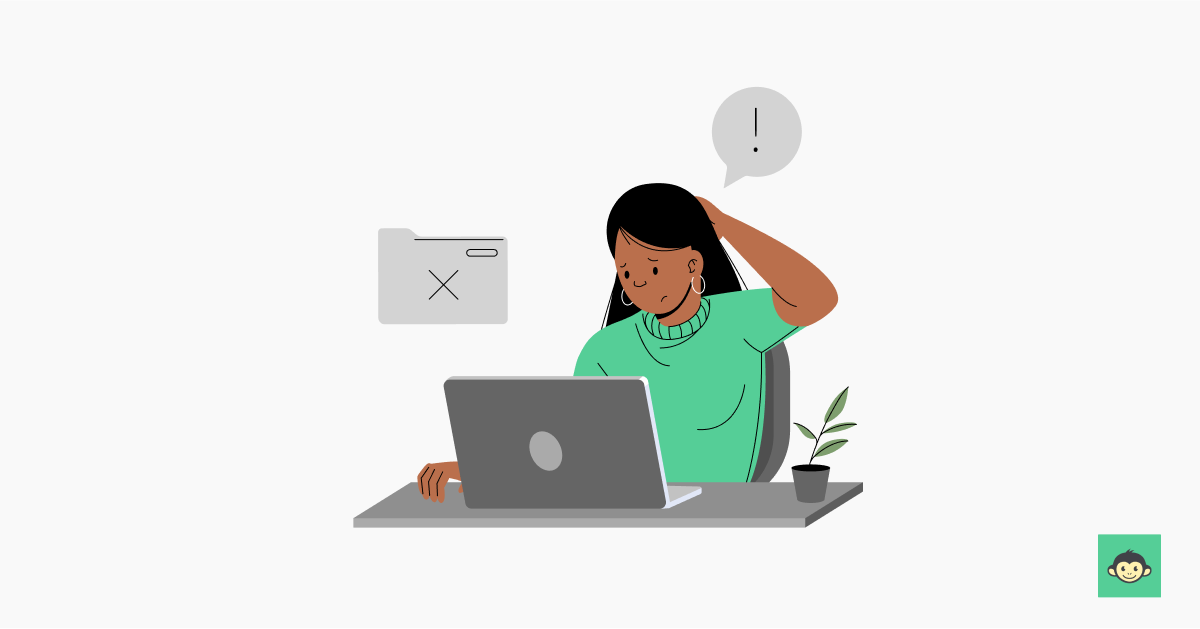Social loafing: Definition and how to reduce it as a leader in the workplace

Have you ever noticed a shift in effort when working on a group project? Perhaps you've experienced a team meeting where some members seem to contribute more than others.
This phenomenon, known as the social loafing effect, can be a major hurdle for teams in the workplace. It describes a decrease in individual effort when working within a group setting compared to working alone.
Social loafing can be incredibly frustrating, especially for team members who consistently go the extra mile. It can also lead to missed deadlines, lower-quality work, and a decline in overall team morale.
As a leader in 2024, fostering a productive and collaborative work environment is crucial. Understanding the causes of social loafing and implementing effective strategies to curb it can make a significant difference in your team's success.
In this blog post, we'll explore the concept of social loafing, its causes, and its impact on teams. We'll then equip you with the top strategies you can leverage as a leader to keep your team engaged and motivated, maximize their potential, and ensure everyone contributes their fair share.
Social loafing definition

Social loafing is a phenomenon in which individuals exert less effort when working collectively on a task than they would if they were working alone. This concept emerged from the field of experimental social psychology itself, highlighting the impact of group dynamics on individual behavior.
One explanation for social loafing is the diffusion of responsibility. When people work in groups, they may feel less accountable for the outcome because they perceive that others will pick up the slack. This diffusion of responsibility can lead to a decrease in individual effort, as each person assumes that others will compensate for any lack of contribution.
Another factor contributing to social loafing is the loss of motivation due to reduced visibility of individual contributions. In a group work setting, individual efforts may not be as easily recognized or rewarded compared to when working alone. Consequently, individuals may feel less motivated to exert themselves fully, leading to a decrease in overall productivity.
Social loafing psychology definition
Social loafing, a phenomenon rooted in social psychology, refers to the tendency of individuals to exert less effort when working in a group compared to when they work alone. In the workplace, this behavior manifests when employees perceive their contributions as less noticeable or feel a diminished sense of personal accountability. The diffusion of responsibility within teams can lead to reduced individual performance, as workers assume that others will compensate for their lack of effort.
This issue is often exacerbated by a lack of clear goals, insufficient feedback, and poor leadership. Understanding the psychological underpinnings of social loafing is crucial for managers aiming to foster a productive work environment.
By setting explicit expectations, promoting individual accountability, and ensuring recognition of contributions, leaders can mitigate social loafing and enhance team efficiency. Addressing this challenge involves creating a culture where every team member feels valued and responsible for the collective success.
What are the psychological theories behind social loafing?
Social loafing, a phenomenon where individuals exert less effort when working in groups compared to working alone, has been extensively studied in psychology. Several psychological theories help explain why this occurs:
- Diffusion of responsibility: In group settings, individuals may feel less accountable for the outcome, assuming that others will contribute. This diffusion of responsibility leads to reduced personal effort as the perceived need to contribute diminishes.
- Social impact theory: This theory suggests that the impact of an individual's effort diminishes as the size of the group increases. As the group grows, each member feels less influential, which can reduce their motivation to contribute, believing that their input will go unnoticed or unappreciated.
- Equity theory: According to equity theory, individuals are motivated to maintain fairness in their contributions relative to others. If they perceive that others in the group are contributing less, they may reduce their own effort to restore a sense of balance, leading to social loafing.
- Evaluation apprehension: This theory posits that people may reduce their effort in group tasks if they believe their individual performance is not being evaluated. Without the pressure of individual accountability, they might feel less motivated to exert their full effort.
- Conservation of resources: This theory suggests that individuals may conserve their resources, such as energy and effort, in group settings. Believing that others will contribute, they save their resources for tasks where their effort will be more noticeable and personally beneficial.
Ringelmann’s Rope-Pulling Experiment

Ringelmann’s Rope-Pulling Experiment, conducted in the early 20th century by French agricultural engineer Max Ringelmann, is a seminal study in understanding social loafing. Ringelmann observed that individual effort decreases as group size increases, a phenomenon now known as the Ringelmann Effect. In his experiment, participants were asked to pull on a rope both individually and in groups.
Ringelmann measured the force exerted and discovered that the collective effort of the group was less than the sum of individual efforts. For example, if each person could pull with a force of 100 units alone, a group of eight people did not exert 800 units of force collectively but significantly less.
This reduction in individual effort in a group setting highlighted the concept of social loafing, where individuals feel less accountable and assume others will compensate for their lack of effort. The experiment underscores the importance of understanding group dynamics in organizational settings to enhance productivity and ensure equitable contribution from entire team members.
What is the difference between social loafing and free riding?

Social loafing and free riding are two related but distinct concepts in social psychology and economics.
Social loafing refers to a phenomenon where individuals exert less effort when working collectively on a task than they would if they were working alone.
This decrease in collective effort model others is often attributed to factors such as diffusion of responsibility, reduced visibility of individual contributions, and a perception that others will compensate for any lack of effort.
Free riding, on the other hand, is a concept commonly discussed in the context of public goods and economic theory. It refers to the behavior of individuals who benefit from a collective resource or public good without contributing to its production or maintenance.
In other words, free riders exploit the efforts of others without making their own contribution, leading to a potential imbalance between the costs and benefits of cooperation.
While both social loafing and free riding involve a reduction in individual effort within a group context, they differ in their underlying mechanisms and contexts.
Social loafing primarily occurs when individuals are actively involved in a shared task or project, whereas free riding typically occurs in situations where individuals can benefit from a collective resource or public good without directly participating in its creation or maintenance.
What causes social loafing at work?

Social loafing in the workplace can be attributed to various factors, both individual and organizational. Here are some key contributors:
1. Diffusion of responsibility
When individuals work in groups, they may feel less accountable for the outcome because responsibility is distributed among other group members. This diffusion of responsibility can lead to a decrease in individual effort as people assume others will pick up the slack.
2. Reduced visibility of individual contributions
In a group setting, individual efforts may not be as easily recognized or rewarded compared to when working alone. As a result, employees in social compensation may feel less motivated to exert themselves fully, leading to social loafing.
3. Task meaningfulness and perceived importance
If employees perceive a task as unimportant, trivial, or lacking in personal relevance, they are more likely to engage in social loafing. This can happen if they don't understand the significance of the task or if it's disconnected from their goals or values.
4. Lack of feedback or recognition
When employees don't receive feedback or recognition for their contributions, they may become demotivated and disengaged, leading to reduced effort and social loafing. Recognition and positive feedback can foster a sense of value and motivation among employees.
5. Group cohesion and dynamics
Group cohesion, or the sense of belonging and unity within a group size team, can influence social loafing. In cohesive groups, where members feel connected and supportive of each other, social loafing may be less prevalent due to higher levels of accountability and peer pressure.
6. Perceived equity in work distribution
If employees perceive that others are not pulling their weight or that there is an unfair distribution of work, they may engage in social loafing as a form of retaliation or as a way to restore equity.
7. Leadership and management practices
Poor leadership, lack of clear goals, ineffective communication, and ambiguous role expectations can all contribute to social loafing. When employees are not properly guided or motivated by their leaders, they may become less engaged and productive.
8. Personal motivation and individual differences
Employees' personal motivation levels and individual differences can significantly impact the occurrence of social loafing. Some individuals may have a naturally lower level of intrinsic motivation or a higher propensity for shirking responsibilities when they are not directly overseen.
9. Group size and structure
The size and structure of the group can also influence social loafing. In larger groups, it is easier for individuals to hide behind the collective effort, reducing their sense of personal responsibility. Smaller groups or those with clearly defined roles and responsibilities may experience less social loafing as individual contributions are more visible and critical to the group's success.
10. Task complexity and skill variety
Tasks that are too simple or repetitive can lead to boredom and disengagement, contributing to social loafing. Conversely, tasks that match employees' skill sets and provide a level of challenge can increase engagement and effort. Ensuring that tasks are appropriately complex and varied can help maintain motivation and reduce the likelihood of social loafing.
11. Social and cultural factors
Cultural norms and social expectations can play a role in social loafing. In cultures that emphasize collective responsibility and community over individual achievement, social loafing may be less prevalent. Additionally, workplace culture that fosters collaboration, mutual respect, and shared goals can mitigate the tendency for individuals to reduce their effort in group settings.
12. Inadequate resource allocation
When resources such as time, tools, or personnel are not adequately allocated, employees may feel overwhelmed or unsupported, leading to reduced effort. Ensuring that teams have the necessary resources to complete their tasks can help prevent social loafing.
13. Misalignment of incentives
If the rewards and incentives in place do not align with individual or team contributions, employees may become disengaged. Misaligned incentives can lead to a lack of motivation, where employees do not see the value in putting forth their best effort. Aligning incentives with desired outcomes can encourage greater individual contributions.
How do you identify social loafing?
Identifying social loafing in the workplace is crucial for maintaining team productivity and morale. Social loafing occurs when individuals exert less effort in a group setting than they would individually. Managers and team leaders must be vigilant in recognizing the signs of social loafing to implement timely interventions.
Here are few indicators to help identify social loafing:
- Decreased individual output: Monitor the output of team members. If an individual’s contributions decline significantly during group tasks, it may indicate social loafing.
- Lack of engagement: Notice if employees appear disengaged or unmotivated during group meetings or collaborative activities. Reduced participation can be a sign of decreased effort.
- Frequent absenteeism: Employees who frequently miss meetings or deadlines may be exhibiting signs of social loafing, relying on others to compensate for their absence.
- Uneven work distribution: Pay attention to whether a few team members are consistently handling most of the workload. This imbalance often suggests that others are not contributing equally.
- Reduced quality of work: A decline in the quality of an employee’s work during group projects, compared to their individual tasks, can be a red flag for social loafing.
- Minimal initiative: Employees showing a lack of initiative or creativity in team settings, preferring to follow rather than lead, might be engaging in social loafing.
- Avoidance of responsibility: Notice if individuals frequently avoid taking on responsibilities or volunteer for less demanding tasks during team activities.
- Peer feedback: Solicit feedback from team members. Colleagues often notice when someone is not contributing fairly to the team’s efforts.
- Behavioral changes: Observe any behavioral changes such as increased distractions, prolonged breaks, or reluctance to collaborate, which may indicate social loafing.
Social loafing at work types

Social loafing in the workplace can manifest in various forms, each with its own characteristics and implications for productivity and team dynamics. Here are some common types of social loafing observed in work settings:
Task avoidance
Employees may engage in task avoidance by intentionally avoiding or procrastinating on their assigned responsibilities. This behavior often stems from a lack of motivation, interest, or perceived significance of the task.
Instead of actively contributing to the team's goals, individuals may find ways to divert their attention to less demanding or more enjoyable activities.
Minimal effort contribution
Some employees may contribute the minimum effort required to fulfill their obligations without going above and beyond. This minimal-effort approach can result in subpar work quality, missed deadlines, and reduced overall productivity. Individuals exhibiting this behavior may justify their actions by assuming that others will compensate for any shortcomings.
Social hiding
Social hiding occurs when employees deliberately withdraw from group interactions and avoid participating in collaborative efforts. They may isolate themselves from team discussions, meetings, or projects, thereby limiting their contribution to collective or individual tasks.
Social hiders may feel disconnected from the team or lack confidence in their abilities, leading them to disengage from group activities.
Passive resistance
Passive resistance involves subtle forms of opposition or noncompliance with organizational directives or team decisions. Employees may passively resist by expressing skepticism, questioning authority, or subtly undermining group cohesion and effectiveness. This behavior can hinder progress and create tension within the team if left unaddressed.
Credit taking without contribution
In some cases, individuals may attempt to take credit for the work of others without making significant contributions themselves. They may exploit the collective efforts of the team to enhance their own reputation or advance their career prospects.
This behavior erodes trust in the entire group and undermines collaboration, as it creates resentment among team members who feel their contributions are undervalued.
What impact does social loafing have on teams?

Social loafing can have several negative impacts on teams, affecting their productivity, cohesion, and overall effectiveness. Here are some of the key consequences:
Decreased productivity
Social loafing leads to a reduction in individual effort within the team, resulting in decreased overall productivity. When team members contribute less than their full potential, tasks take longer to complete, deadlines may be missed, and the co worker performance and quality of work may suffer.
This can hinder the team's ability to achieve its goals and deliver results in a timely manner.
Lower morale and motivation
Social loafing can create a sense of frustration and demotivation among team members who perceive that others are not pulling their weight. This can lead to a decline in morale and motivation, as individuals feel undervalued and unsupported in their efforts. As a result, team members may become disengaged and less committed to the team's objectives.
Weakened team dynamics
Social loafing can erode trust and cohesion within the team, as it undermines the sense of mutual respect and accountability among other team members. When some team members consistently contribute less than others, it can breed resentment and conflict, leading to tension and dysfunction within the team.
This weakens collaboration and communication, hindering the team's ability to work together effectively.
Inequitable distribution of work
Social loafing often results in an uneven distribution of work within the team, with some members shouldering a disproportionate amount of the workload. This can create feelings of unfairness and resentment among those who feel overburdened while also reinforcing the behavior of social loafers who exploit the efforts of others.
Over time, this inequity can damage relationships and undermine team morale.
Reduced innovation and creativity
Social loafing stifles creativity and innovation within the team, as individuals may be less inclined to contribute new ideas or approaches when they perceive that their efforts are not valued or recognized.
Without the full engagement of all team members, opportunities for brainstorming, problem-solving, and experimentation are limited, inhibiting the team's ability to generate novel solutions and adapt to changing circumstances.
Increased turnover rates
The frustration and resentment caused by social loafing can lead to higher turnover rates, as motivated and hardworking employees may choose to leave the team or organization in search of a more equitable and supportive work environment. This turnover disrupts team stability and can result in the loss of valuable talent.
Hindered professional growth
When social loafing occurs, individual team members may miss out on opportunities for skill development and professional growth. If team members are not fully engaged or are carrying the burden of others, they may be unable to focus on their own development, limiting their potential for advancement and career progression.
How can social loafing affect the overall company culture and growth of an organization?

Social loafing can significantly impact the overall company culture and growth of an organization, as it undermines key aspects of teamwork, productivity, and employee engagement.
Firstly, social loafing can erode the core values and norms that define a company's culture. When employees observe others engaging in social loafing behavior without consequences, it sets a precedent that devalues hard work and commitment.
This can lead to a culture where mediocrity is tolerated and individual accountability is diminished, ultimately weakening the company's cultural fabric.
Social loafing can hinder organizational growth by impeding collaboration and innovation. In environments where social loafing occurs or is prevalent, employees may be less inclined to share ideas, take risks, or challenge the status quo.
As a result, opportunities for creativity and problem-solving are stifled, limiting the company's ability to adapt to change and capitalize on new opportunities in the market.
Social loafing can have a detrimental effect on employee morale and motivation. When hardworking employees perceive that their efforts are not recognized or rewarded appropriately, they may become disillusioned and disengaged.
This can lead to higher turnover rates, decreased job satisfaction, and a loss of talent, all of which can impede the company's ability to attract and retain top performers.
Social loafing can create a sense of unfairness and inequity among employees, particularly those who consistently go above and beyond in their roles. When some employees are allowed to coast by while others shoulder a disproportionate amount of the workload, it breeds resentment and erodes trust within the organization.
This can lead to increased interpersonal conflict, decreased collaboration, and, ultimately, a decline in overall team effectiveness.
How to reduce social loafing at work as a leader: Top 30 strategies to try in 2024

Reducing social loafing at work requires proactive leadership and the implementation of strategies that promote accountability, engagement, and collaboration. Here are 30 effective strategies for leaders to try in 2024:
1. Set clear expectations
Clearly communicate roles, responsibilities, and performance expectations to team members. Ensure everyone understands their contribution to the team's goals and the importance of their individual efforts.
2. Establish goals and deadlines
Set specific, measurable goals and deadlines for tasks and projects. This helps create a sense of urgency and focus among team members, reducing the likelihood of procrastination and social loafing.
3. Encourage individual accountability
Hold team members accountable for their performance by establishing individual accountability, tracking progress, providing feedback, and recognizing achievements. Encourage a culture of ownership and responsibility for both individual and team outcomes.
4. Promote team cohesion
Foster a sense of belonging and unity within the team through team-building activities, regular check-ins, and opportunities for open communication and collaboration. Strengthening interpersonal relationships can reduce social loafing by increasing mutual trust and support.
5. Lead by example
Demonstrate a strong work ethic and commitment to excellence in your team loyalty and own behavior. Model the level of effort and dedication you expect from your team members, inspiring them to follow suit.
6. Provide resources and support
Ensure team members have the necessary resources, training, and support to perform their roles effectively. Address any barriers or challenges that may hinder their productivity and motivation.
7. Promote transparency
Keep team members informed about project progress, decisions, and changes within the organization. Transparency fosters trust and reduces ambiguity, helping to align individual efforts with organizational goals.
8. Encourage collaboration
Create opportunities for collaboration and knowledge-sharing among team members. Encourage brainstorming sessions, cross-functional projects, and peer-to-peer support to leverage the collective expertise and creativity of group member of the team.
9. Recognize and reward contributions
Acknowledge and celebrate individual and team achievements to reinforce positive behavior and motivate continued effort. Recognition can take various forms, including praise, bonuses, promotions, and opportunities for professional development.
10. Offer autonomy and flexibility
Empower team members to make decisions and take ownership of their work by providing autonomy and flexibility where possible. Allow individuals to choose how they approach tasks and projects, respecting their unique strengths and preferences.
11. Monitor performance
Regularly assess individual and team performance against established goals and benchmarks. Identify any signs of social loafing early on in group performance, and address them through coaching, feedback, and corrective action as needed.
12. Promote a culture of continuous improvement
Encourage a growth mindset within the team, where mistakes are viewed as opportunities for learning and development. Foster a culture of innovation, experimentation, and continuous improvement to keep team members motivated and engaged in their work.
13. Implement peer evaluations
Incorporate peer evaluations into the performance review process. This encourages every individual members to hold each other accountable and provides additional insights into individual contributions, helping to identify and address social loafing.
14. Customize motivational strategies
Recognize that different team members are motivated by different factors. Customize your motivational strategies to meet individual needs and preferences, whether through professional development opportunities, personal recognition, or team-based incentives.
15. Foster a supportive work environment
Create a work environment that supports collaboration and mutual respect. Address conflicts promptly, encourage open communication, and provide a safe space for every team member to express their ideas and concerns.
16. Leverage technology and tools
Utilize technology and project management tools to track progress, assign tasks, and facilitate communication. These tools can provide transparency, streamline workflows, and help ensure that everyone is contributing effectively to the team's goals.
17. Regularly reassess team composition
Periodically evaluate the composition of your team to ensure that the right mix of skills, experience, and personalities is in place. Adjust team roles and assignments as needed to maintain a balanced workload and optimize team performance, reducing the risk of social loafing.
18. Encourage open feedback
Promote an environment where team members feel comfortable providing open and honest feedback. This encourages accountability and ensures that any issues related to social loafing can be addressed promptly.
19. Set up mentorship programs
Pair less experienced team members with mentors who can provide guidance and encouragement. This not only builds skills but also instills a sense of responsibility and ownership in both mentors and mentees.
20. Create a shared vision
Develop a compelling and shared vision for the team. When team members are aligned with a common purpose and see the value of their contributions, they are less likely to engage in social loafing.
21. Implement rotational leadership
Encourage different team members to take on leadership roles for specific projects or tasks. This helps distribute responsibility and gives everyone a sense of ownership in the team's success.
22. Offer skill development opportunities
Provide continuous learning opportunities that allow team members to enhance their skills. A well-equipped team is more likely to be engaged and contribute fully to group efforts.
23. Evaluate workload distribution regularly
Regularly review and adjust the distribution of tasks to ensure fairness and balance. Ensuring that no one is overloaded can reduce the likelihood of social loafing.
24. Conduct regular one-on-one meetings
Hold regular one-on-one meetings with team members to discuss their progress, concerns, and goals. These meetings offer opportunities to address any issues related to engagement and effort.
25. Incorporate gamification
Use gamification techniques to make tasks more engaging and competitive. Introducing elements like point systems, leaderboards, or rewards can motivate team members to contribute more actively.
26. Provide clear paths for advancement
Show team members how their efforts contribute to their career growth. Knowing that hard work and commitment lead to advancement can motivate individuals to avoid social loafing.
27. Set up accountability partnerships
Pair team members to hold each other accountable for their contributions. These partnerships can create a supportive environment where individuals motivate each other to maintain high levels of effort.
28. Celebrate team diversity
Highlight and celebrate the diverse skills and backgrounds within the team. Recognizing the unique contributions of each member fosters a culture of appreciation and reduces social loafing.
29. Align team incentives with performance
Ensure that team incentives are directly tied to measurable performance outcomes. When rewards are contingent on collective success, team members are more likely to contribute fully.
30. Promote a positive team culture
Foster a positive team culture where enthusiasm and a strong work ethic are valued. A positive atmosphere encourages team members to engage fully and support each other.
Social loafing questionnaire: Way to know your employees well in 2024
Developing a comprehensive social loafing questionnaire for employees can be an effective tool to identify and address the underlying causes of reduced effort in team settings. Such a questionnaire can help leaders understand the extent of social loafing within their teams and implement targeted interventions.
Below are 35 questions that can be included in a social loafing questionnaire for the workplace:
- Do you feel that your individual contributions are recognized in team projects?
- How often do you feel that others rely on you to complete their work?
- Do you believe that your efforts make a significant difference to the team's success?
- How clearly are your roles and responsibilities defined within the team?
- Do you receive regular feedback on your performance in team tasks?
- How motivated are you to contribute to team projects compared to working alone?
- Do you feel a sense of personal accountability for the outcomes of team projects?
- How often do you notice team members not pulling their weight?
- Do you think the distribution of work in your team is fair?
- How effectively does your team leader communicate expectations and goals?
- How cohesive do you feel your team is?
- Do you believe that team members support each other adequately?
- Are you provided with the necessary resources and support to perform your role in the team?
- How transparent is the communication within your team regarding project progress?
- Do you feel empowered to make decisions and take ownership of your tasks in team projects?
- How frequently are individual and team achievements recognized?
- How effective are team-building activities in promoting unity within your team?
- Do you find team meetings productive and engaging?
- How often are your suggestions and ideas considered in team projects?
- How comfortable are you in providing feedback to peers about their contributions?
- Do you feel that your workload in team projects is manageable?
- How often do you feel that team deadlines are reasonable and achievable?
- Do you believe that your team leader addresses issues of unequal effort effectively?
- How well does your team handle conflicts or disagreements?
- Do you feel that there are opportunities for growth and development within your team?
- How often do you feel motivated by the goals set by your team?
- Do you believe that your team has a clear vision and direction?
- How often do you receive recognition or appreciation for your ideas in team settings?
- Do you think that your team's performance is regularly evaluated and improved?
- How comfortable are you discussing workload concerns with your team leader?
- Do you feel that your team's efforts are aligned with the organization's goals?
- How confident are you in your team's ability to meet project deadlines?
- Do you believe that your team works efficiently and effectively together?
- How often do you feel that your team's strengths are utilized effectively?
- Do you think that your team is adaptable to changes and challenges?
Conclusion
Social loafing presents a significant challenge for leaders and organizations striving to cultivate high-performing teams and foster a positive work culture. This phenomenon, characterized by reduced individual effort and engagement within group settings, can have detrimental effects on productivity, morale, and overall team effectiveness.
From uneven participation in group projects to passive resistance to change, social loafing manifestations in the workplace are diverse and pervasive.
However, by implementing proactive strategies such as setting clear expectations, promoting accountability, and fostering collaboration, leaders can mitigate the impact of social loafing and create an environment where every team member feels valued and motivated to contribute their best.
Recognizing the signs of social loafing, addressing underlying issues, and nurturing a culture of trust, transparency, and continuous improvement are essential steps toward building resilient and high-performing teams capable of driving organizational growth and success in an ever-evolving business landscape.
FAQs
1. What impact does social loafing have on teams?
Social loafing can significantly impact teams by reducing overall productivity, lowering morale, and weakening team cohesion. When individuals exert less effort in group settings, tasks take longer to complete, and the quality of work may decline. This can lead to frustration among team members who feel they are carrying an unfair share of the workload, resulting in conflicts and diminished trust within the team.
2. How can social loafing impact team performance?
Social loafing negatively impacts team performance by decreasing individual contributions and diminishing overall effectiveness. When team members rely on others to complete tasks, it can lead to missed deadlines, poor-quality work, and reduced innovation. The lack of accountability can erode trust and collaboration, ultimately preventing the team from reaching its full potential and achieving its goals efficiently.
3. Can social loafing be beneficial in any way?
Social loafing is generally detrimental, but in rare cases, it can offer a temporary relief from stress or burnout. When team members take on a lighter workload, it may provide short-term mental or physical rest. However, this is not a sustainable strategy, as prolonged social loafing can harm overall team dynamics, reduce productivity, and create long-term challenges in achieving team objectives.
4. How does group size affect social loafing?
Group size significantly influences social loafing. In larger groups, individuals are more likely to feel their contributions are less visible and less crucial, leading to reduced effort. The diffusion of responsibility increases as group size grows, making it easier for members to hide behind the collective work. Smaller groups, where individual contributions are more apparent, tend to experience less social loafing.
5. Can social loafing occur in virtual teams?
Yes, social loafing can occur in virtual teams, often exacerbated by the lack of face-to-face interaction. The physical separation and reduced visibility of individual contributions in virtual settings can lead to a sense of anonymity, making it easier for some team members to contribute less. Effective communication, clear role definitions, and regular check-ins are essential to mitigate social loafing in virtual environments.



